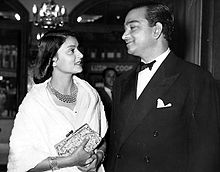
Back কোচ বিহাৰ ৰাজ্য Assamese Koch Bihar Catalan Cooch Behar German Cooch Behar French Koch Bihar Italian クーチ・ビハール王国 Japanese कूच बिहार संस्थान Marathi Koch Bihar Malay ریاست کوچ بہار PNB Cooch Behar Portuguese
This article needs additional citations for verification. (January 2025) |
Cooch Behar | |||||||
|---|---|---|---|---|---|---|---|
| 1586–1949 | |||||||
 Cooch Behar and vicinity from The Imperial Gazetteer of India, 1931 | |||||||
| Capital |
| ||||||
| History | |||||||
• Established | 1586 | ||||||
| 1949 | |||||||
| Area | |||||||
| 1901 | 3,385 km2 (1,307 sq mi) | ||||||
| |||||||
| Today part of | India Bangladesh Nepal | ||||||
| Cooch Behar State | |||||||||||||||||||||||||||||||||||||||||||||||||||||||||||||
|---|---|---|---|---|---|---|---|---|---|---|---|---|---|---|---|---|---|---|---|---|---|---|---|---|---|---|---|---|---|---|---|---|---|---|---|---|---|---|---|---|---|---|---|---|---|---|---|---|---|---|---|---|---|---|---|---|---|---|---|---|---|
| Part of History of Assam | |||||||||||||||||||||||||||||||||||||||||||||||||||||||||||||
| Part of History of Bengal | |||||||||||||||||||||||||||||||||||||||||||||||||||||||||||||
| |||||||||||||||||||||||||||||||||||||||||||||||||||||||||||||
| Cooch Behar monarchy data | |||||||||||||||||||||||||||||||||||||||||||||||||||||||||||||
| Raikat (Royal family) | |||||||||||||||||||||||||||||||||||||||||||||||||||||||||||||
| Cooch Behar (Capital of the kingdom) | |||||||||||||||||||||||||||||||||||||||||||||||||||||||||||||
| Cooch Behar Palace (Royal residence) | |||||||||||||||||||||||||||||||||||||||||||||||||||||||||||||




Cooch Behar, also known as Koch Bihar,[1] was a princely state in India during the British Raj.[2] The state was placed under the Bengal States Agency, part of the Eastern States Agency of the Bengal Presidency. It was located south of the Himalayan kingdom of Bhutan, in present-day West Bengal.
Cooch Behar State was formed when the Kamata Kingdom under the Koch dynasty split following the death of Nara Narayan in 1586. The eastern portion, Koch Hajo, was soon absorbed by Ahom. The western portion, Koch Bihar, formed a separate unit that came under direct challenge by the Mughal Empire. After weathering the Mughal threat, a new foe emerged in the form of an expansionist Bhutanese kingdom. After a series of wars with the Bhutanese and Tibetans, the Northern threat was pushed back but not before a Bhutanese regent was installed in the royal court. The Koch Bihar court decided to invite British intervention. This came in the form of military assistance that—acting in concert with Koch Bihar forces—ended the Northern challenge once and for all. However the British East India Company sought guarantees whereby the independence of Koch Bihar was limited by treaties. When the British colonial rule was finally terminated in India, the Koch Bihar state immediately acceded to and merged with India in 1949 and became a part of West Bengal. The district, Cooch Behar District, is named after this erstwhile kingdom.
- ^ "The eastern division was known as 'Kamrup' in the local sources and as 'Koch Hajo' in the Persian chronicles. The western division known as Koch Behar was known as 'Kuc' (Koch) or 'Koch Behar' in Persian chronicles, or simply as 'Behar' in the Gurucharitas." (Nath 1989, p. 86)
- ^ Princely States of India

